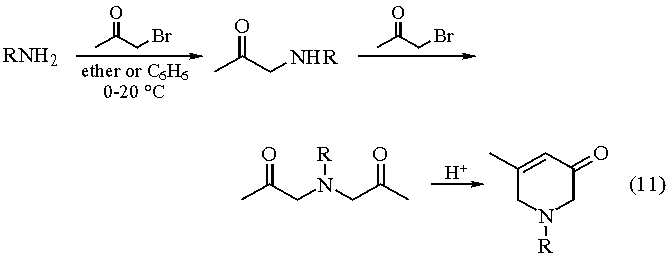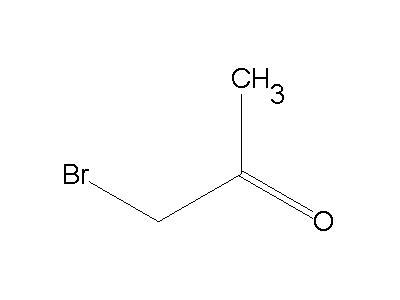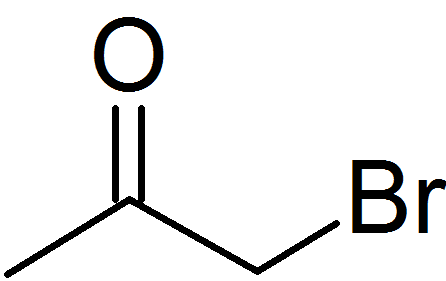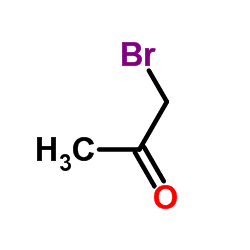Formula C3H5BrO Density 1.63 g/cm³ | Boiling point 137 °C Appearance Colorless lachrymator | |
 | ||
Bromoacetone is an organic compound with the formula CH3COCH2Br. This colorless liquid is a lachrymatory agent. It is a precursor to other organic compounds.
Contents

Occurrence

Bromoacetone is naturally present (less than 1%) in the essential oil of a seaweed from the vicinity of the Hawaiian Islands.
Synthesis
Bromoacetone is available commercially, sometimes stabilized with magnesium oxide. It was first described in the 19th century, attributed to N. Sokolowsky.

Bromoacetone is prepared by combining bromine and acetone, with catalytic acid. As with all ketones, acetone enolizes in the presence of acids or bases. The alpha carbon then undergoes electrophilic substitution with bromine. The main difficulty with this method is over-bromination, resulting in di- and tribrominated products. If a base is present, bromoform is obtained instead, via the haloform reaction.
Applications

It was used in World War I as a chemical weapon, called BA by British and B-Stoff (white cross) by Germans. Due to its toxicity, it is obsolete as a riot control agent and is not used anymore. Bromoacetone is a versatile reagent in organic synthesis. It is, for example, the precursor to hydroxyacetone.
